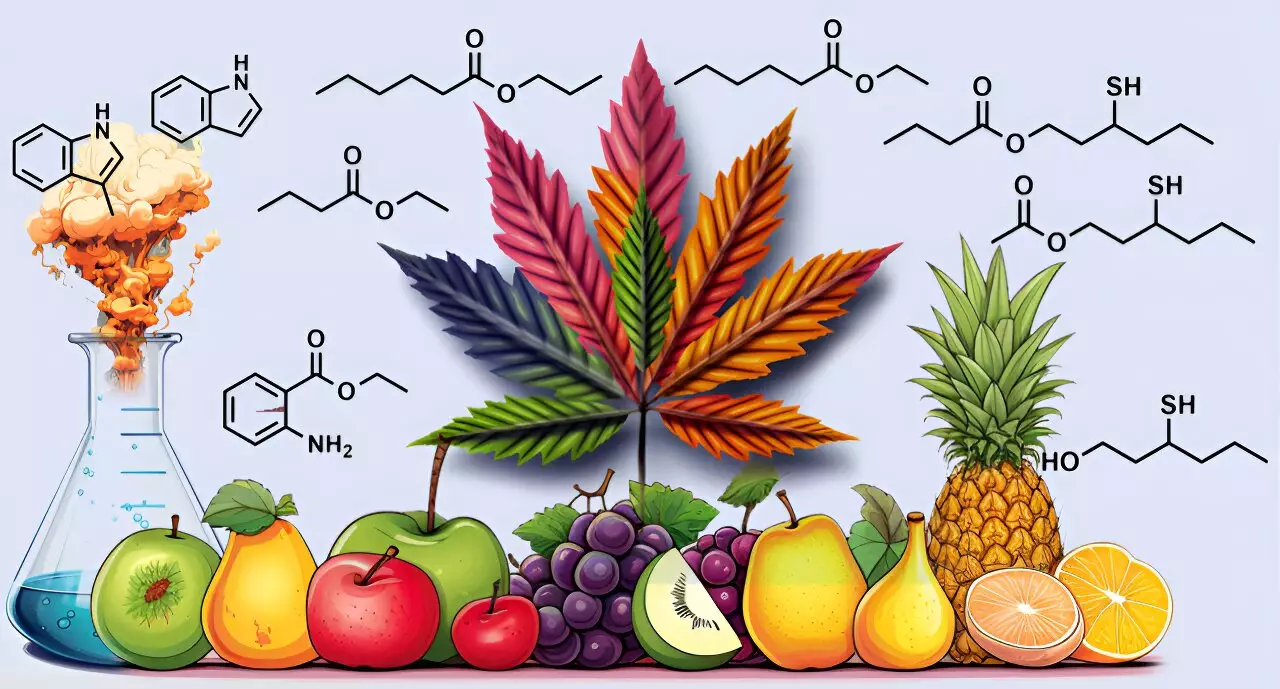Cannabis has long been celebrated for its distinct aroma, captivating millions with its skunky and sometimes fruity scent. However, the exact molecules responsible for this smell have remained a mystery. In an effort to uncover the secrets behind cannabis’s odor, a team of chemists at terpene distributor Abstrax Tech embarked on an extensive study. Their research, recently published in ACS Omega, sheds light on the compounds that give cannabis its unique scent.
The Quest for the Aromatic Molecules
Previous studies and anecdotal evidence had suggested that thiols, a type of volatile sulfur compound (VSC), played a major role in cannabis’s aroma. Building upon this knowledge, the Abstrax research team suspected that there might be more compounds involved. With this hypothesis in mind, they set out to identify the molecules responsible.
To unravel the mystery, the researchers utilized a range of techniques, including mass spectrometry, gas chromatography, and flame ionization detection. These methods provided different perspectives on the compounds present in cannabis buds, allowing for a comprehensive analysis.
Among the molecules identified, a standout was 3-methyl-2-butene-1-thiol (321MBT), which the team discovered played a prominent role in odor production. This molecule, also found in warm beer and skunk spray, contributes to the distinctive smell of cannabis. By pinpointing this compound, scientists gain a better understanding of the key factors influencing the aroma.
Volatile Sulfur Compounds and Aromas
In addition to 321MBT, the researchers found that cannabis buds contained various classes of volatile sulfur compounds (VSCs), known to influence the aroma. These VSCs were notably associated with tropical, fruity, and sweet scents. Additionally, a highly pungent compound called skatole was identified, contributing to the savoriness of the aroma.
While terpenes, essential oils found in cannabis, have long been recognized for their role in odor characteristics, the study highlights that the combination of 321MBT and various VSCs contributes most profoundly to the distinctive odor of marijuana. This new understanding provides a platform for altering the proportions of these compounds, potentially leading to the creation of cannabis products with custom smells.
The research conducted by the team of chemists at Abstrax Tech has unveiled the complex nature of the compounds responsible for cannabis’s unique smell. The discovery of 321MBT as a key player in odor production, along with the presence of different classes of VSCs, provides valuable insights into the intricacies of marijuana’s aroma. By harnessing these findings, scientists and industry professionals can explore the creation of customized cannabis products to suit individual preferences. Understanding the molecules behind cannabis’s scent not only contributes to scientific knowledge but also expands the possibilities for enhancing the consumption experience.


Leave a Reply